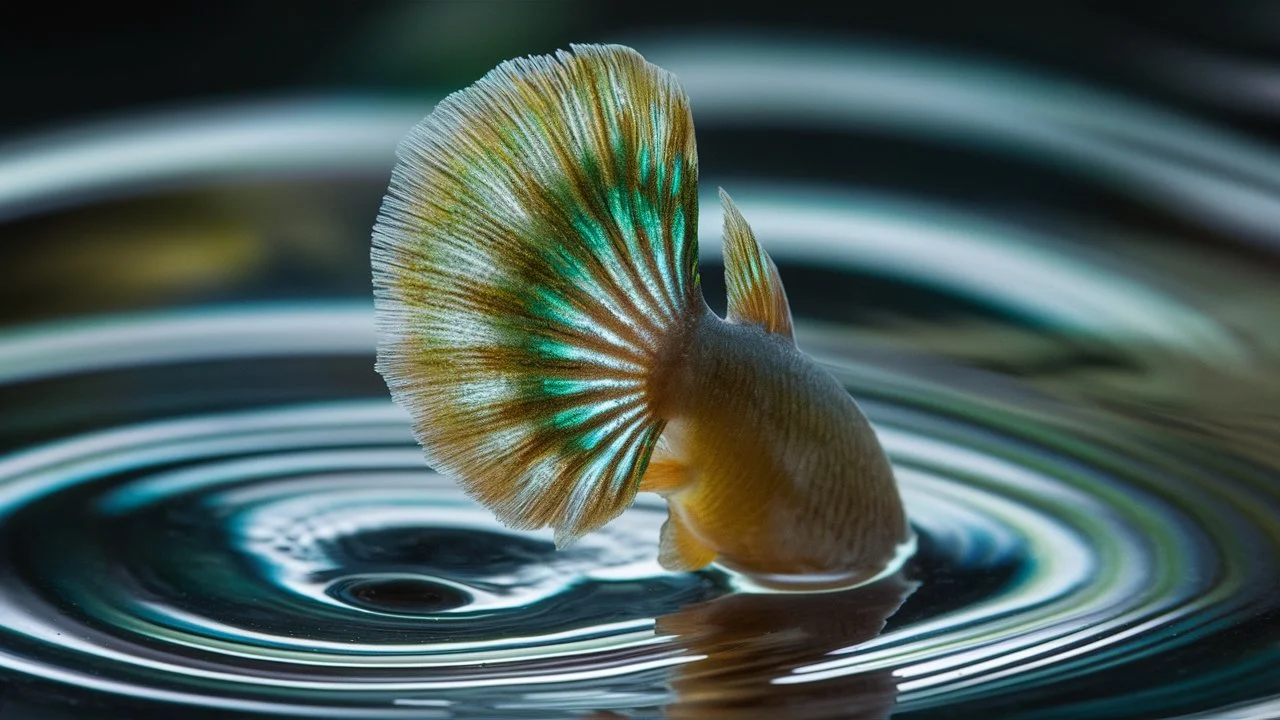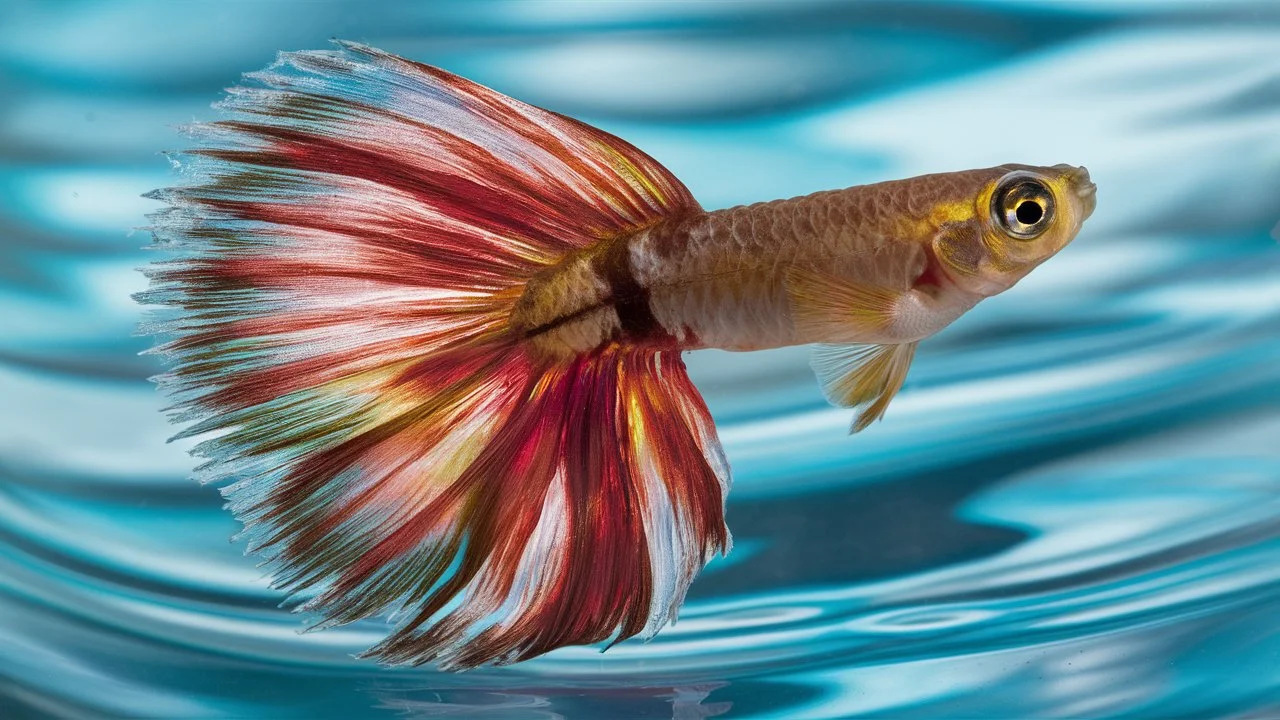Coffertail guppies are small, colorful fish that make great pets. They are easy to care for and are perfect for both beginners and experienced fish keepers. With their vibrant colors and lively behavior, coffertail guppies can brighten up any aquarium. In this guide, you will learn everything you need to know to keep your coffertail guppies happy and healthy.
What are Coffertail Guppies?
Coffertail guppies are a type of freshwater fish known for their bright colors and unique tail shapes. They are a variety of the common guppy, which is one of the most popular aquarium fish in the world. Coffertail guppies get their name from their distinctive tail fin, which looks like a colorful, flowing fan.
These fish are small, usually growing to about 1.5 to 2 inches in length. They come in many different colors and patterns, making each one unique. Coffertail guppies are very active and social, often seen swimming around the tank and interacting with other fish.
They are also known for being hardy and adaptable, which makes them an excellent choice for beginners. With proper care, coffertail guppies can live for 2 to 3 years, providing endless enjoyment and beauty to your aquarium.
Related reading: Elephant Ear Guppies cost: Lifespan, Diet and Health Tips

Setting Up the Tank
Tank Size and Equipment
- Tank Size: A minimum of a 10-gallon tank is recommended for a small group of guppies. If you plan to keep a larger community of guppies or other species, consider a 20-gallon tank or larger to provide ample swimming space and reduce stress among fish.
- Water Heater: Guppies prefer a consistent water temperature between 75-82°F (24-28°C). An adjustable heater with a thermostat will help maintain a stable temperature. In larger tanks, a heater at each end can ensure even heating.
- Thermometer: Use an aquarium thermometer to monitor the water temperature daily. Place the thermometer away from the heater for an accurate reading.
- Filter: Choose a filter that provides gentle water flow, such as a sponge filter or an internal filter with adjustable flow settings. Filters help remove waste and toxins, keeping the water clean and healthy for your guppies.
- Air Pump: An air pump with an air stone increases oxygen levels in the water, which is beneficial for the health of your fish. Ensure the air pump is not too strong to avoid creating strong currents.
Substrate and Decorations
- Substrate: Use smooth gravel or sand as the substrate. A depth of about 2 inches is sufficient for plants to root and for biological filtration to occur. Avoid sharp substrates that can injure your fish.
- Plants: Live plants such as Java moss, Anubias, and Amazon sword are excellent choices. They provide hiding spots, improve water quality by absorbing nitrates, and create a natural environment. Artificial plants are also acceptable and require less maintenance.
- Decorations: Add rocks, driftwood, and caves to create a diverse environment. Ensure all decorations are aquarium-safe and free of sharp edges. Hiding places reduce stress and encourage natural behavior.
Water Quality
- Water Source: Use dechlorinated tap water or bottled water suitable for aquariums. Chlorine and heavy metals in untreated tap water can harm your guppies. Use a water conditioner to treat tap water.
- Water Parameters: Guppies thrive in a pH range of 6.8 to 7.8 and a water hardness of 8-12 dGH. Regularly test the water using reliable test kits to ensure these parameters are maintained.
- Water Changes: Perform weekly water changes of about 25% to remove accumulated toxins and waste. Use a gravel vacuum to clean the substrate and prevent debris buildup.
Feeding process of Coffertail Guppies
Types of Food
- Commercial Fish Food: High-quality flake food or pellets formulated for tropical fish are ideal for daily feeding. Look for products rich in protein and vitamins to support vibrant colors and overall health.
- Live and Frozen Food: Supplement their diet with live or frozen foods such as brine shrimp, daphnia, and bloodworms. These foods provide essential proteins and fats, enhancing the guppies’ coloration and vitality.
- Vegetables: Occasionally offer blanched vegetables like peas, spinach, and zucchini. These provide fiber and essential nutrients, contributing to a balanced diet.
Feeding Schedule
- Frequency: Feed your guppies 1-2 times a day. Overfeeding can lead to poor water quality and health issues. Only provide as much food as they can consume in 2-3 minutes.
- Portion Control: Observe your fish during feeding to ensure all food is eaten. Remove any uneaten food to prevent it from decomposing and polluting the water.
Tank Maintenance
Routine Cleaning
- Weekly Water Changes: Change about 25% of the tank water weekly. This helps remove excess nutrients and waste products. Use a siphon or gravel vacuum to clean the substrate.
- Filter Maintenance: Clean the filter media once a month by rinsing it in old tank water (not tap water) to preserve beneficial bacteria. Replace filter cartridges as recommended by the manufacturer.
- Algae Control: Algae can grow on the tank walls, decorations, and plants. Use an algae scraper or sponge to clean the glass and decorations. Adding algae-eating fish or snails can help control algae growth.
Monitoring Water Parameters
- Regular Testing: Test the water parameters (pH, ammonia, nitrite, nitrate) weekly using aquarium test kits. Maintain a log to track changes and identify potential issues early.
- Adjustments: If water parameters are outside the acceptable range, make gradual adjustments to avoid shocking the fish. Use water conditioners, pH adjusters, or other products as needed.
Health and Wellness of Coffertail Guppies
Recognizing Illness
- Common Signs: Watch for signs of illness such as white spots (ich), fin rot, clamped fins, unusual swimming behavior, loss of appetite, or changes in coloration. Early detection is crucial for effective treatment.
- Quarantine Tank: Set up a separate quarantine tank to isolate sick fish and prevent the spread of disease. Treat the sick fish with appropriate medications as recommended by a vet or pet store. Quarantine new fish for at least two weeks before introducing them to the main tank.
Preventing Stress
- Stable Environment: Keep the tank environment stable by avoiding sudden changes in temperature, water parameters, or tank mates. Stability reduces stress and promotes a healthy immune system.
- Compatibility: Choose tank mates that are compatible with guppies and have similar care requirements. Avoid aggressive fish that may bully or harm the guppies.
- Hiding Spots: Provide plenty of hiding spots and plants to reduce stress and make the fish feel secure. Guppies appreciate a well-planted tank with areas to retreat and explore.
Breeding process of Coffertail Guppies
Breeding Basics
- Mating Behavior: Male guppies are more colorful and have elongated, ornate tails. They court females by displaying their fins and performing mating dances. Females are generally larger and have a more subdued coloration.
- Pregnancy: Female guppies are livebearers, meaning they give birth to live young rather than laying eggs. A pregnant female will develop a dark gravid spot near her anal fin and may appear larger as she carries the fry.
Breeding Setup
- Separate Tank: Use a separate breeding tank to protect the fry from being eaten by adult fish. The breeding tank should have plenty of plants and hiding spots. A tank divider or breeding box can also be used within the main tank.
- Birth: Move the pregnant female to the breeding tank when she is close to giving birth. After she gives birth, remove her to prevent her from eating the fry.
- Raising Fry: Feed the fry with finely crushed flake food, liquid fry food, or specialized fry food. Perform frequent water changes to keep the water clean and promote healthy growth. Ensure the breeding tank has gentle filtration to avoid sucking up the fry.
Tank Mates of Coffertail Guppies
Suitable Tank Mates
- Small, Peaceful Fish: Guppies do well with other small, peaceful fish such as neon tetras, harlequin rasboras, and dwarf corydoras. These fish have similar care requirements and coexist peacefully with guppies.
- Shrimp and Snails: Freshwater shrimp (such as cherry shrimp) and snails (like nerite snails) are excellent tank mates. They help keep the tank clean by consuming algae and leftover food.
- Avoid Aggressive Fish: Avoid keeping guppies with aggressive or larger fish that may see them as prey or bully them. Fish such as bettas, angelfish, and larger cichlids can be problematic.
Acclimation Process
- Slow Introduction: When introducing new tank mates, acclimate them slowly to avoid shock. Float the bag containing the new fish in the tank for about 15-20 minutes to equalize the temperature.
- Gradual Mixing: Gradually mix tank water with the water in the bag over the course of 30-60 minutes. This helps the new fish adjust to the water chemistry.
- Monitor Behavior: After introduction, monitor the behavior of all fish to ensure they are adjusting well and there is no aggression.
Enhancing Guppy Colors
Nutrition
- Balanced Diet: Provide a balanced diet rich in protein and essential vitamins. High-quality commercial foods, along with live and frozen foods, help enhance the vibrant colors of guppies.
- Color-Enhancing Foods: Some commercial foods are specifically formulated to enhance the coloration of fish. These foods contain natural color-enhancing ingredients such as spirulina and carotenoids.
Tank Environment
- Lighting: Proper lighting can enhance the natural colors of guppies. Use aquarium lights that mimic natural daylight. Avoid keeping the lights on for more than 10-12 hours a day to prevent stress and algae growth.
- Clean Water: Maintaining good water quality is essential for vibrant colors. Regular water changes and proper filtration help keep the water clean and clear, allowing the guppies’ colors to shine.
Advanced Care Tips of Coffertail Guppies
Creating a Biotope Tank
- Natural Habitat: Consider creating a biotope tank that mimics the natural habitat of guppies. Include plants, substrate, and decorations that resemble their native environment.
- Water Parameters: Research the specific water parameters of guppies’ natural habitat and try to replicate them as closely as possible.
Genetic Diversity
- Breeding for Diversity: To maintain genetic diversity and avoid inbreeding, introduce new guppies from different sources. This helps prevent genetic issues and promotes healthier offspring.
- Selective Breeding: If you are interested in breeding for specific traits, research selective breeding techniques. This involves choosing parent fish with desirable traits and carefully managing their offspring.
Troubleshooting Common Problems
Disease Management
- Ich: Ich, or white spot disease, is a common issue. It appears as white spots on the fish’s body and fins. Treat with over-the-counter ich medications and raise the water temperature slightly to speed up the life cycle of the parasite.
- Fin Rot: Fin rot causes the edges of the fins to become ragged and discolored. It is often caused by poor water quality or bacterial infection. Improve water conditions and treat with antibacterial medications.
- Dropsy: Dropsy causes the fish to swell and scales to protrude. It is often a sign of internal infection or organ failure. Quarantine the affected fish and treat with antibacterial medications, though prognosis is often poor.
Behavioral Issues
- Aggression: If guppies show signs of aggression, such as nipping fins or chasing each other, ensure there are enough hiding spots and consider separating the aggressive fish. Sometimes, increasing the tank size can reduce aggression by providing more space.
- Lethargy: If guppies appear lethargic or inactive, check water parameters and temperature. Ensure they are not stressed by sudden changes or poor water quality.
Conclusion
Coffertail guppies are a delightful and colorful addition to any aquarium. With the right setup and care, they can thrive and bring joy to your home. Remember to maintain stable water conditions, provide a balanced diet, and monitor their health regularly. By following this comprehensive care guide, you can ensure your coffertail guppies live a long, healthy, and vibrant life. Enjoy the rewarding experience of keeping these beautiful fish and watch them brighten up your aquarium with their lively presence.
